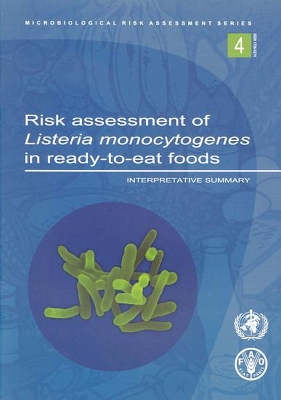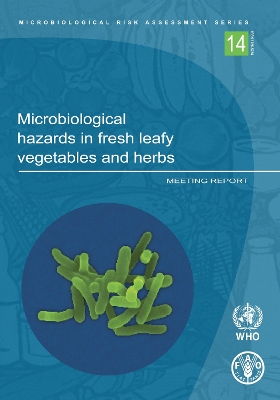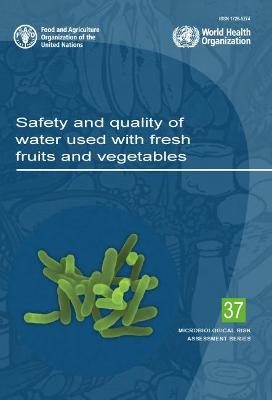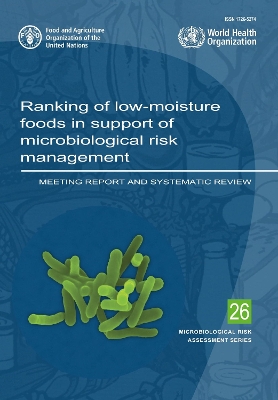Microbiological Risk Assessment
2 primary works • 6 total works
Book 4
Risk Assessment of Listeria Monocytogenes in Ready-to-Eat Foods
by Who and World Health Organization
Published 30 December 2004
Book 14
Microbiological Hazards in Fresh Leafy Vegetables and Herbs
by World Health Organization
Published 31 August 2009
During fresh fruit and vegetables (FFV) production, water is used for a variety of purposes. Even the water was conventionally treated and disinfected, it may still potentially contain human pathogens, albeit at low concentrations. A risk assessment, appropriate to the national or local production context, should be conducted to assess the potential risks associated with a specific water source or supply in order to devise the appropriate risk mitigation strategies.Since the 48th session of Codex Committee on Food Hygiene (CCFH) noted the importance of water safety and quality in food production and processing, FAO and WHO has undertaken the work on this subject. This report describes the output of the third in a series of meetings, which examined appropriate and fit-for-purpose microbiological criteria for water used with fresh fruit and vegetables. The advice herein will support decision making when applying the concept of fit-for-purpose water for use in the pre- and post-harvest production of fresh fruit and vegetables
This meeting considered global evidence on the burden of illness and on the prevalence and concentration of selected microbial hazards with respect to various spices and dried aromatic herbs. It also developed an approach to rank the health risks related to the commodity-pathogen combinations.
Ranking of low-moisture foods in support of microbiological risk management
by Who
Published 31 October 2022
Low-moisture foods (LMF) are foods that are naturally low in moisture or are produced from higher moisture foods through drying or dehydration processes. These foods typically have a long shelf life and have been perceived for many years to not represent microbiological food safety risk hazards. However, in recent years, a number of outbreaks of food-borne illnesses linked to LMF has illustrated that despite the fact that microorganisms cannot grow in these products, bacteria do have the possibility to persist for long periods of time in these matrices
Prevention and control of microbiological hazards in fresh fruits and vegetables
by Who
Published 15 January 2024
This report evaluates commodity-specific interventions used at all stages of fresh fruit and vegetable production, from primary production to post-harvest activities, transportation, point of sale and consumer use. Emphasis is placed on the identification and evaluation of interventions used throughout the world to reduce microbiological hazards that contribute to the risk of foodborne illnesses





